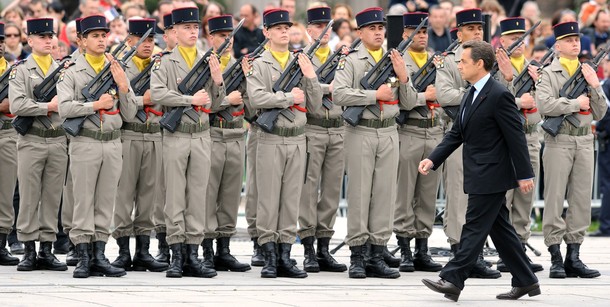
From Stephen Fidler, Alistair MacDonald, and Patrick McGroarty, the Wall Street Journal: European governments’ budget-slashing efforts are expected to cut deep into the Continent’s defense spending, widening the gulf between U.S. and European military capabilities. …
In the short term, tight finances don’t appear likely to affect European deployment to Afghanistan, where 40,000 troops, mainly from Europe, are on the ground with 78,000 Americans. "There has been no indication that any government has contemplated to reduce its commitment to Afghanistan for financial reasons," said Ivo Daalder, the U.S. ambassador to the North Atlantic Treaty Organization, which leads the Afghan effort. …
This week, Anders Fogh Rasmussen, head of the 28-nation NATO, called on European countries to "resist the temptation to use the economic crisis as an excuse for letting the transatlantic defense-spending gap widen any further."
Military spending in most European countries is already below 2008 levels. Spain’s defense spending has fallen by almost 9% this year, or more than €600 million ($740 million), adding to last year’s €400 million cut. Italy plans to slash defense spending, too, as part of an austerity package it announced last month.
Earlier this month, Germany announced more than €80 billion in overall spending cuts through 2014, about 10% of which is expected to come from its defense budget. A few days later, the French Defense Ministry also said it will seek to reduce its budget, which stood at €32 billion in 2010, by as much as €5 billion next year. That comes on top of a six-year plan France announced in 2008 to trim its army by 17%, or 54,000 jobs.
Europe could spend less but spend better, defense analysts say. At the end of 2008, the countries of the European Union had 1.8 million men and women under arms, compared with 1.4 million in the U.S., according to the European Defence Agency, an EU body. It spent more than the U.S. on personnel—€106 billion versus €93 billion—but deployed 80,000 troops on operations, compared with 210,000 for the U.S. …
"We should not continue to invest our scarce resources in fixed infrastructure and soldiers who are essentially stuck in their barracks. We should redirect our investments towards more flexible, mobile and modern armed forces—armed forces that we can actually use," Mr. Rasmussen said. (photo: Getty)
Image: getty%206%2025%2010%20%20Nicolas%20Sarkozy%20Colmar%20ceremony.jpg
